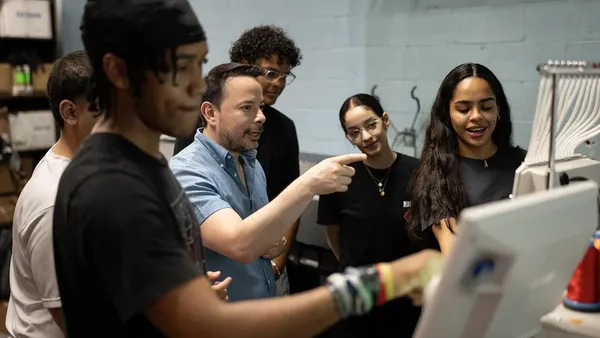Dive Brief:
- In Colorado, students compete in the state’s Spanish Spelling Bee where they spell words in Spanish rather than ones in English, writes Chalkbeat. Children not only need to say the right letters — they have to also say the accent marks too.
- This is the third year of the competition, where students from 14 schools try and earn one of three top spots for the National Spanish Spelling Bee.
- Teachers at dual language schools find the spelling bees are a good way to support a bilingual education.
Dive Insight:
Dual language programs are a way to immerse students in language learning that goes deeper than studying books, or having the occasional conversation in class. While supporting English learners (EL) as they master their new language, these programs benefit all students, no matter their language levels, according to a 2017 report from the American Councils for International Education. The group noted that a dual-language classroom “…directly correlates with greater educational achievement,” citing a four-year study co-sponsored by the organization.
The ability to switch back and forth between two languages allows students to grow comfortable with their new skills at their own speed. And as Education Dive reported earlier this year, this model of immersion learning has increased the percentage of EL students meeting or exceeding state English Language Arts standards in a California district from 42% in the 2014-15 school year to 51% in the 2017-18 school year.
Knowing a second language is an important tool for any student to master. Immersion language programs are a powerful boost in learning a skill that can be a valuable asset in a student’s education — and in their lives.










